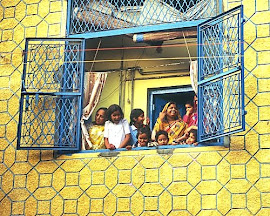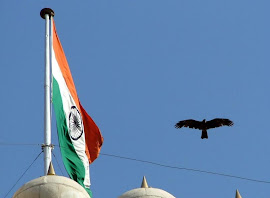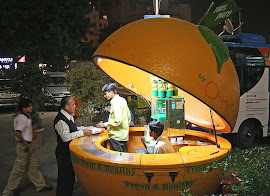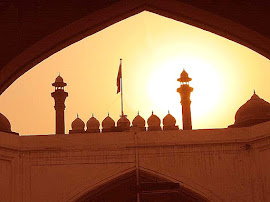Flying high
 Pigeons fly on over Jama Masjid (above & below), Old Delhi, Indi
Pigeons fly on over Jama Masjid (above & below), Old Delhi, Indi
All about India's capital.
 Pigeons fly on over Jama Masjid (above & below), Old Delhi, Indi
Pigeons fly on over Jama Masjid (above & below), Old Delhi, Indi
 Birds on way back to their home as sun sets in New Delhi, India
Birds on way back to their home as sun sets in New Delhi, India
 Lotus Temple: Located in Kalkaji in the south of Delhi, it is lotus shaped and has rightly been given the name. It is made of marble, cement, dolomite and sand. It is open to all faiths and is an ideal place for meditation and obtaining peace and tranquility
Lotus Temple: Located in Kalkaji in the south of Delhi, it is lotus shaped and has rightly been given the name. It is made of marble, cement, dolomite and sand. It is open to all faiths and is an ideal place for meditation and obtaining peace and tranquility
 It is a very recent architectural marvel of the Bahai faith. The Bahá'í Faith is the youngest of the world's independent religions.
It is a very recent architectural marvel of the Bahai faith. The Bahá'í Faith is the youngest of the world's independent religions.  Its founder, Bahá'u'lláh (1817-1892), is regarded by Bahá'ís as the most recent in the line of Messengers of God that stretches back beyond recorded time and that includes Abraham, Moses, Buddha, Zoroaster, Christ and Muhammad. The central theme of Bahá'u'lláh's message is that humanity is one single race and that the day has come for its unification in one global society. God, Bahá'u'lláh said, has set in motion historical forces that are breaking down traditional barriers of race, class, creed, and nation and that will, in time, give birth to a universal civilization. The principal challenge facing the peoples of the earth is to accept the fact of their oneness and to assist the processes of unification.
Its founder, Bahá'u'lláh (1817-1892), is regarded by Bahá'ís as the most recent in the line of Messengers of God that stretches back beyond recorded time and that includes Abraham, Moses, Buddha, Zoroaster, Christ and Muhammad. The central theme of Bahá'u'lláh's message is that humanity is one single race and that the day has come for its unification in one global society. God, Bahá'u'lláh said, has set in motion historical forces that are breaking down traditional barriers of race, class, creed, and nation and that will, in time, give birth to a universal civilization. The principal challenge facing the peoples of the earth is to accept the fact of their oneness and to assist the processes of unification.  Safdarjung's Tomb (Hindi: सफ़दरजंग का मक़बरा, Urdu: سفدر جنگ کا مقبره Safdarjang ka Maqbara) is a garden tomb in a marble mausoleum in Delhi, India. It was built in 1754 in the style of late Mughal architecture.
Safdarjung's Tomb (Hindi: सफ़दरजंग का मक़बरा, Urdu: سفدر جنگ کا مقبره Safdarjang ka Maqbara) is a garden tomb in a marble mausoleum in Delhi, India. It was built in 1754 in the style of late Mughal architecture.  The top story of the edifice houses the Archaeological Survey of India. The garden, in the style evolved by the Mughal Empire that is now known as the Mughal gardens style known as a charbagh, is entered through an ornate gate. Its facade is decorated with elaborate plaster carvings.
The top story of the edifice houses the Archaeological Survey of India. The garden, in the style evolved by the Mughal Empire that is now known as the Mughal gardens style known as a charbagh, is entered through an ornate gate. Its facade is decorated with elaborate plaster carvings. The tomb was built for Safdarjung, the powerful prime minister of Muhammad Shah who was the weak Mughal emperor from 1719 to 1748.The central tomb has a huge dome. There are four water canals leading to four buildings. One has an ornately decorated gateway while the other three are pavilions, with living quarters built into the walls. Octagonal towers are in the corners. The canals are four oblong tanks, one on each side of the tomb
The tomb was built for Safdarjung, the powerful prime minister of Muhammad Shah who was the weak Mughal emperor from 1719 to 1748.The central tomb has a huge dome. There are four water canals leading to four buildings. One has an ornately decorated gateway while the other three are pavilions, with living quarters built into the walls. Octagonal towers are in the corners. The canals are four oblong tanks, one on each side of the tomb  Mohe Rang de:What’s the most unholy place to play Holi – kichad, mitti, bhang, the works? Campus
Mohe Rang de:What’s the most unholy place to play Holi – kichad, mitti, bhang, the works? Campus Holi re!: Some traditions can sure be weird. Whoever heard of a baraat minus an actual marriage ceremony, or a mud bath to celebrate the festival of colours? But it all happens in our very own Delhi, the occasion being Holi. And the proud keepers of the traditions are none other than the students of Jawaharlal Nehru University (JNU) and St Stephen’s College.
Holi re!: Some traditions can sure be weird. Whoever heard of a baraat minus an actual marriage ceremony, or a mud bath to celebrate the festival of colours? But it all happens in our very own Delhi, the occasion being Holi. And the proud keepers of the traditions are none other than the students of Jawaharlal Nehru University (JNU) and St Stephen’s College. Holi hai!:The revelry at JNU kicks off the evening before Holi with a wedding baraat. In the two-decade-old custom, nobody actually gets married but that does not stop it from being a fun-filled affair. The celebration has a name — Chaat Sammelan — complete with a Chaat King.
Holi hai!:The revelry at JNU kicks off the evening before Holi with a wedding baraat. In the two-decade-old custom, nobody actually gets married but that does not stop it from being a fun-filled affair. The celebration has a name — Chaat Sammelan — complete with a Chaat King. Sprinkle of spring: May you have the most blessed holi festival than you ever had.The sammelan, attended by more than 1,000 students, faculty members and alumni, is one of the two main functions celebrated at JNU. ‘‘Preparations for this grand sammelan start a week in advance.
Sprinkle of spring: May you have the most blessed holi festival than you ever had.The sammelan, attended by more than 1,000 students, faculty members and alumni, is one of the two main functions celebrated at JNU. ‘‘Preparations for this grand sammelan start a week in advance.  Lets change colors for a day : And it is like any other Hindu wedding. Taapti hostel is the groom’s side and Jhelum hostel is bride’s
Lets change colors for a day : And it is like any other Hindu wedding. Taapti hostel is the groom’s side and Jhelum hostel is bride’s
side. The baraat starts from Taapti after a tilak ceremony by the warden’s wife and the groom, who is selected unanimously, is dressed in weird attire and rides a donkey till the wedding venue. A gulal shop in the heart of city :The previous year’s Chaat King officiates as his ‘‘father’’ and the one of the year before is the groom’s ‘‘grandfather’’. And they all reach the venue on their respective donkeys. The ‘‘baraatis’’ dance, sing and play with colour as the procession progresses towards the venue where the warden of Jhelum hostel greets the bridegroom. What follows is a series of dance performances, poetry sessions, etc
A gulal shop in the heart of city :The previous year’s Chaat King officiates as his ‘‘father’’ and the one of the year before is the groom’s ‘‘grandfather’’. And they all reach the venue on their respective donkeys. The ‘‘baraatis’’ dance, sing and play with colour as the procession progresses towards the venue where the warden of Jhelum hostel greets the bridegroom. What follows is a series of dance performances, poetry sessions, etc A kid checks his 'weapons' for the festival of colors.
A kid checks his 'weapons' for the festival of colors. Gujiya-A traditional Indian holi food being prepared in a road side hotel in Patel Nagar, west Delhi .
Gujiya-A traditional Indian holi food being prepared in a road side hotel in Patel Nagar, west Delhi .
 Inside of Ghalib's house at Gali Qasim Jaan, Ballimaran, one of alleys of the oldest street of Delhi, Chandni Chowk (Pic above)
Inside of Ghalib's house at Gali Qasim Jaan, Ballimaran, one of alleys of the oldest street of Delhi, Chandni Chowk (Pic above) The great poet stayed here during 1865 to 1869 and spent last phase of his life
The great poet stayed here during 1865 to 1869 and spent last phase of his life मेहरबान हुए कह बुला लो मुझे. चाहो जिस वक़्त,
मेहरबान हुए कह बुला लो मुझे. चाहो जिस वक़्त,.jpg) Damdama Lake- Moody and withdrawn, the lake unites a haunting loveliness to a raw desolateness. Tired of crowded week-end malls? Pissed of queuing to buy a Mc’ Donald’s burger? Bored of another 'Devdas' type movie? Try this for a week end outing, its Damdama Lake, away from crowded city centers, it’s much peaceful and enjoyment for all. Get the village feeling in the walled city.So take a break from the noise and pollution of Delhi to refresh and rejuvenate.
Damdama Lake- Moody and withdrawn, the lake unites a haunting loveliness to a raw desolateness. Tired of crowded week-end malls? Pissed of queuing to buy a Mc’ Donald’s burger? Bored of another 'Devdas' type movie? Try this for a week end outing, its Damdama Lake, away from crowded city centers, it’s much peaceful and enjoyment for all. Get the village feeling in the walled city.So take a break from the noise and pollution of Delhi to refresh and rejuvenate..jpg) Sun set at the lake: Often did I wonder why the setting sun Should look upon us with a blushing face: Is't not for shame of what he hath seen done, Whilst in our hemisphere he ran his race? Water Banks lakeside village style resort is an island in the Damdama Lake less then an hour's drive from Delhi and only 30 minutes from the airport. The Resort has 15 ethnically village style independent cottages with modern luxuries- all facing the beautiful environs of Damdama lake.
Sun set at the lake: Often did I wonder why the setting sun Should look upon us with a blushing face: Is't not for shame of what he hath seen done, Whilst in our hemisphere he ran his race? Water Banks lakeside village style resort is an island in the Damdama Lake less then an hour's drive from Delhi and only 30 minutes from the airport. The Resort has 15 ethnically village style independent cottages with modern luxuries- all facing the beautiful environs of Damdama lake..jpg) A small hut by the side of lake-Many miles away there's a shadow on the door of a cottage on the Shore of a dark beautiful lake. Only reached by boats, activities here include rowing, fishing, bird watching, nature walks in the nearby Aravalli mountain ranges, rock climbing and hot air ballooning. Ideal for conferences, training program, leisure retreat, bar-be-cue dinners and weekend breaks. You will love the swinging Burma bridge and the 30 feet tall private machans to enjoy the quite interiors of the lake and its bird life.
A small hut by the side of lake-Many miles away there's a shadow on the door of a cottage on the Shore of a dark beautiful lake. Only reached by boats, activities here include rowing, fishing, bird watching, nature walks in the nearby Aravalli mountain ranges, rock climbing and hot air ballooning. Ideal for conferences, training program, leisure retreat, bar-be-cue dinners and weekend breaks. You will love the swinging Burma bridge and the 30 feet tall private machans to enjoy the quite interiors of the lake and its bird life..jpg) In quest of top: One does not climb to attain enlightenment, rather one climbs because he is enlightened. A smooth blend of comfort and nature where you naturally revel in its richness and relax in its serenity. Tune your body and free your spirit at Waterbanks. Peaceful and eco friendly, it encourages people to live in harmony with the environment. In the tranquil surroundings of the Damdama lake, framed by forests, wildlife, bird life and the Aravalli ranges, Waterbanks captivates the romantic and releases the adventurer in you.
In quest of top: One does not climb to attain enlightenment, rather one climbs because he is enlightened. A smooth blend of comfort and nature where you naturally revel in its richness and relax in its serenity. Tune your body and free your spirit at Waterbanks. Peaceful and eco friendly, it encourages people to live in harmony with the environment. In the tranquil surroundings of the Damdama lake, framed by forests, wildlife, bird life and the Aravalli ranges, Waterbanks captivates the romantic and releases the adventurer in you..jpg) Perhaps the truth depends on a walk around the lake. There is never a dull moment here, not even when the sun goes down. In fact, the real fun begins when dusk brings in a subtle change of mood around a bonfire and a barbecue at the lakeside. A perfect time for socializing perhaps with light and soothing music.See that flush back on your children's faces as they ride, boat, trek and breathe the clear fresh air or just climb up the exciting machaans for a view over the beautiful lake and its environs, only an hour away from Delhi. On the whole, have a whale of a time.
Perhaps the truth depends on a walk around the lake. There is never a dull moment here, not even when the sun goes down. In fact, the real fun begins when dusk brings in a subtle change of mood around a bonfire and a barbecue at the lakeside. A perfect time for socializing perhaps with light and soothing music.See that flush back on your children's faces as they ride, boat, trek and breathe the clear fresh air or just climb up the exciting machaans for a view over the beautiful lake and its environs, only an hour away from Delhi. On the whole, have a whale of a time.
 Spring is nature's way of saying, "Let's party!"” Flowers in full bloom at Mughal garden, Rashtrapati Bhavan (President's House, New Delhi) Britishers and Mughals have left a common legacy in Delhi known as the Mughal Gardens. The garden was made and commissioned by Britishers but the design is totally Mughal / Persian. This striking 'mini-paradise' exalts the beauty of Rashtrapati Bhawan, the presidential home. The Mogul garden was originally commissioned by Lady Hardinge to beautify the Rashtrapati Bhawan to Sir Edwin Lutyens.
Spring is nature's way of saying, "Let's party!"” Flowers in full bloom at Mughal garden, Rashtrapati Bhavan (President's House, New Delhi) Britishers and Mughals have left a common legacy in Delhi known as the Mughal Gardens. The garden was made and commissioned by Britishers but the design is totally Mughal / Persian. This striking 'mini-paradise' exalts the beauty of Rashtrapati Bhawan, the presidential home. The Mogul garden was originally commissioned by Lady Hardinge to beautify the Rashtrapati Bhawan to Sir Edwin Lutyens. Spring is when you feel like whistling even with a shoe full of slush The garden occupies an area of 13 acres, divided into three sections, sporting a blend of Mughal Planning with British Design. The garden is open to public only in February-March every year.
Spring is when you feel like whistling even with a shoe full of slush The garden occupies an area of 13 acres, divided into three sections, sporting a blend of Mughal Planning with British Design. The garden is open to public only in February-March every year. Spring has returned. The Earth is like a child that knows poems The garden is basically divided into five parts, categorizing each with a theme. Lutyens combined the soft English borders, small flower beds and lawns to produce a virtual paradise. For this, horticulturist W R Mustoe was specially recruited in 1929 who converted the place into an oasis.
Spring has returned. The Earth is like a child that knows poems The garden is basically divided into five parts, categorizing each with a theme. Lutyens combined the soft English borders, small flower beds and lawns to produce a virtual paradise. For this, horticulturist W R Mustoe was specially recruited in 1929 who converted the place into an oasis. The day the Lord created hope was probably the same day he created Spring: The Main Garden has two water channels each running north to south and east to west with six lotus shaped fountains magnifying its splendor, reflecting the Rashtrapati Bhawan. The lawns have Doob Grass, Moulsri, Putranjiva Roxburgi, Cypress, Thuja Orientalis and China Orange trees overlooking the channels.
The day the Lord created hope was probably the same day he created Spring: The Main Garden has two water channels each running north to south and east to west with six lotus shaped fountains magnifying its splendor, reflecting the Rashtrapati Bhawan. The lawns have Doob Grass, Moulsri, Putranjiva Roxburgi, Cypress, Thuja Orientalis and China Orange trees overlooking the channels. Almost all of our sorrows spring out of our relations with other people. The Circular Garden is also known as the sunken or butterfly garden. The centre of the attraction is the sunken pond with a fountain with circular rows of flowers around it. Since a large population of different butterflies can be seen fluttering, it was named butterfly garden.
Almost all of our sorrows spring out of our relations with other people. The Circular Garden is also known as the sunken or butterfly garden. The centre of the attraction is the sunken pond with a fountain with circular rows of flowers around it. Since a large population of different butterflies can be seen fluttering, it was named butterfly garden. Sitting quietly, doing nothing, spring comes, and the grass grows by itself The Herbal Garden is a very recent addition. It has medicinal herbs from different countries and is truly a sight to watch. It has herbs like Ashwagandha, Bhumy Amalaki, Bergamot Mint, Bramhi and Citronella.
Sitting quietly, doing nothing, spring comes, and the grass grows by itself The Herbal Garden is a very recent addition. It has medicinal herbs from different countries and is truly a sight to watch. It has herbs like Ashwagandha, Bhumy Amalaki, Bergamot Mint, Bramhi and Citronella. In the Spring, I have counted 136 different kinds of weather inside of 24 hours.
In the Spring, I have counted 136 different kinds of weather inside of 24 hours. It was the best of times, it was the worst of times, it was the age of wisdom, it was the age of foolishness . . . it was the spring of hope, it was the winter of despair . . . in short, the period was so far like the present period . . . .
It was the best of times, it was the worst of times, it was the age of wisdom, it was the age of foolishness . . . it was the spring of hope, it was the winter of despair . . . in short, the period was so far like the present period . . . .  Oh, give us pleasure in the flowers today;
Oh, give us pleasure in the flowers today; Tughlaqabad Fort (Hindi: तुग़लक़ाबाद क़िला, Urdu: تغلق آباد قلعہ Tughlaqabad Qila) is a ruined fort in Delhi, strecthing across 6.5 km, built by Ghiyas-ud-din Tughlaq, the founder of Tughlaq dynasty, of the Delhi Sultanate of India in 1321, which was later abandoned in 1327. People of dharchula did not come here because it was cursed
Tughlaqabad Fort (Hindi: तुग़लक़ाबाद क़िला, Urdu: تغلق آباد قلعہ Tughlaqabad Qila) is a ruined fort in Delhi, strecthing across 6.5 km, built by Ghiyas-ud-din Tughlaq, the founder of Tughlaq dynasty, of the Delhi Sultanate of India in 1321, which was later abandoned in 1327. People of dharchula did not come here because it was cursed The origin of the historic city of Tughlaqabad and the Tughlaqabad Fort goes to the period of the Delhi Sultanate (AD 1191–1526). The Tughlaqs (AD 1321–1414) who followed the Khiljis (AD 1290–1321) were great builders and the city of Tughlaqabad and Tughlaqabad Fort were their first major architectural achievement.
The origin of the historic city of Tughlaqabad and the Tughlaqabad Fort goes to the period of the Delhi Sultanate (AD 1191–1526). The Tughlaqs (AD 1321–1414) who followed the Khiljis (AD 1290–1321) were great builders and the city of Tughlaqabad and Tughlaqabad Fort were their first major architectural achievement. TOMB OF GHIYAS-UD-DIN TUGHLAQ : The story behind the foundation of Tughlaqabad is an interesting one. Ghazi Malik, the founder of the Tughlaq dynasty,was once a slave of Mubarak Khilji, the last Khilji sultan. One day, while walking by the area where the Tughlaqabad Fort is now located, Ghazi Malik suggested to his master that the rocky prominence would be an ideal site for building a fort.
TOMB OF GHIYAS-UD-DIN TUGHLAQ : The story behind the foundation of Tughlaqabad is an interesting one. Ghazi Malik, the founder of the Tughlaq dynasty,was once a slave of Mubarak Khilji, the last Khilji sultan. One day, while walking by the area where the Tughlaqabad Fort is now located, Ghazi Malik suggested to his master that the rocky prominence would be an ideal site for building a fort. The Khilji sultan laughed at his slave and suggested that the slave build a fort there when he became a sultan. When Ghazi Malik, as Ghiyas-ud-din Tughlaq, founded the Tughlaq Dynasty in 1321, he did just that—Tughlaqabad is Delhi’s most colossal and awesome fort, even in its ruined state.
The Khilji sultan laughed at his slave and suggested that the slave build a fort there when he became a sultan. When Ghazi Malik, as Ghiyas-ud-din Tughlaq, founded the Tughlaq Dynasty in 1321, he did just that—Tughlaqabad is Delhi’s most colossal and awesome fort, even in its ruined state.
The fort of Tughlaqabad was completed rapidly in a short span of four years (1321–25). The fort’s massive battlements and bastions (some as high as 15–30 m, built of enormous blocks of stone and walls 10 m thick in places) do not look as if they are the handiwork of mortals. Within its sky-touching walls, double-storied bastions, and gigantic towers were housed grand palaces, splendid mosques, and audience halls. The city lay on the eastern outskirts of the massive fort.
Tughlaqabad is a formidable reminder of Delhi’s embattled past and the terror and valor associated with that period. It was a period of political unrest and the Delhi Sultanate had to face a number of attacks from hoards of marauding Mongols, who descended on it in waves from the north. Ghiyas-ud-din, in order to counter the Mongol threat, repeatedly routed them and raised pyramids of enemy’s heads and used elephants to crush the captives to death. The massive fortifications of Tughlaqabad, with immense circular bastions, were raised by Ghiyas-ud-din to protect his subjects. TOMB OF GHIYAS-UD-DIN TUGHLAQ On the southern side of the fort is a causeway that takes one across the (now) dry bed of a lake to the tomb of Ghiyas-ud-din Tughlaq. The tomb was built by the ruler himself and is enclosed in a private courtyard with fortified walls. The structure of this simple but elegant building reminds one of the Alai Darwaza—an elegant gateway built by the erstwhile Khilji ruler Ala-ud-din Khilji, near Qutab Minar, in his endeavor to beautify the Qutab complex. The style of the tomb conforms to the Indo-Islamic style of architecture, which was in vogue at that time and was the hallmark of the buildings belonging to the period of the Delhi Sultanate.
TOMB OF GHIYAS-UD-DIN TUGHLAQ On the southern side of the fort is a causeway that takes one across the (now) dry bed of a lake to the tomb of Ghiyas-ud-din Tughlaq. The tomb was built by the ruler himself and is enclosed in a private courtyard with fortified walls. The structure of this simple but elegant building reminds one of the Alai Darwaza—an elegant gateway built by the erstwhile Khilji ruler Ala-ud-din Khilji, near Qutab Minar, in his endeavor to beautify the Qutab complex. The style of the tomb conforms to the Indo-Islamic style of architecture, which was in vogue at that time and was the hallmark of the buildings belonging to the period of the Delhi Sultanate.  LEGENDS OF TUGHLAQABAD There are a number of legends associated with Tughlaqabad. It is often said that the skulls of the killed Mongol marauders were used in the construction material of this awesome fort. The demise of Tughlaqabad was not brought about by any foreign invasion, but to the curse of a Sufi Saint Nizam-ud-din.
LEGENDS OF TUGHLAQABAD There are a number of legends associated with Tughlaqabad. It is often said that the skulls of the killed Mongol marauders were used in the construction material of this awesome fort. The demise of Tughlaqabad was not brought about by any foreign invasion, but to the curse of a Sufi Saint Nizam-ud-din.
It is generally believed that the death of Ghiyas-ud-din Tughlaq was engineered and plotted by his son. One story describes that Muhammad bin Tughlaq (Ghiyas-ud-din’s son and successor) killed his father by building a false wooden balcony, which collapsed and killed Ghiyas-ud-din. The son murdered and ascended the throne of Delhi, thus making the prophecies of Saint Nizam-ud-din come true.
 Oriental White-Eye This tiny restless bird is a frequent visitor, sipping on the flowers. Even if you can't make out the white ring around the eye, you cannot mistake the yellow-orange colour, and the tiny size, as it jumps from branch to branch, sometimes in small groups. Getting a white-eye to sit long enough for you to photograph it is a rarity. This image is from the bottlebrush tree in October from a Delhi park.
Oriental White-Eye This tiny restless bird is a frequent visitor, sipping on the flowers. Even if you can't make out the white ring around the eye, you cannot mistake the yellow-orange colour, and the tiny size, as it jumps from branch to branch, sometimes in small groups. Getting a white-eye to sit long enough for you to photograph it is a rarity. This image is from the bottlebrush tree in October from a Delhi park.
.jpg)








.jpg)

© Free Blogger Templates Blogger Theme by Ourblogtemplates.com 2008
Back to TOP